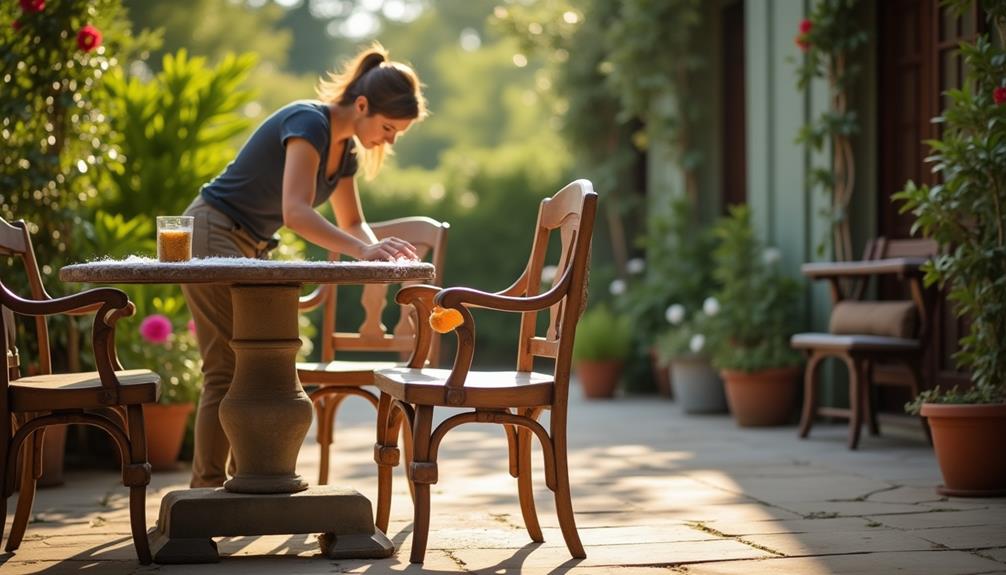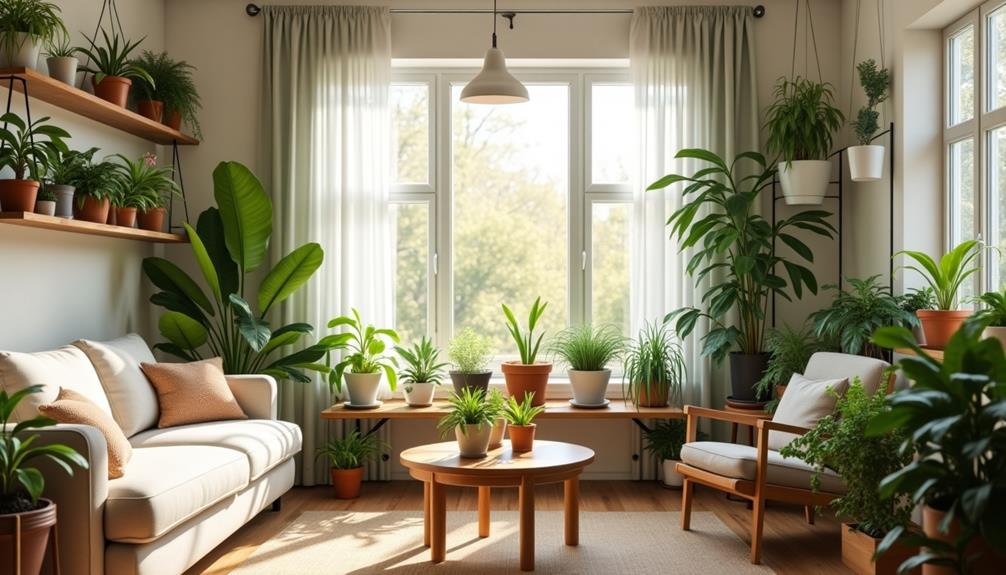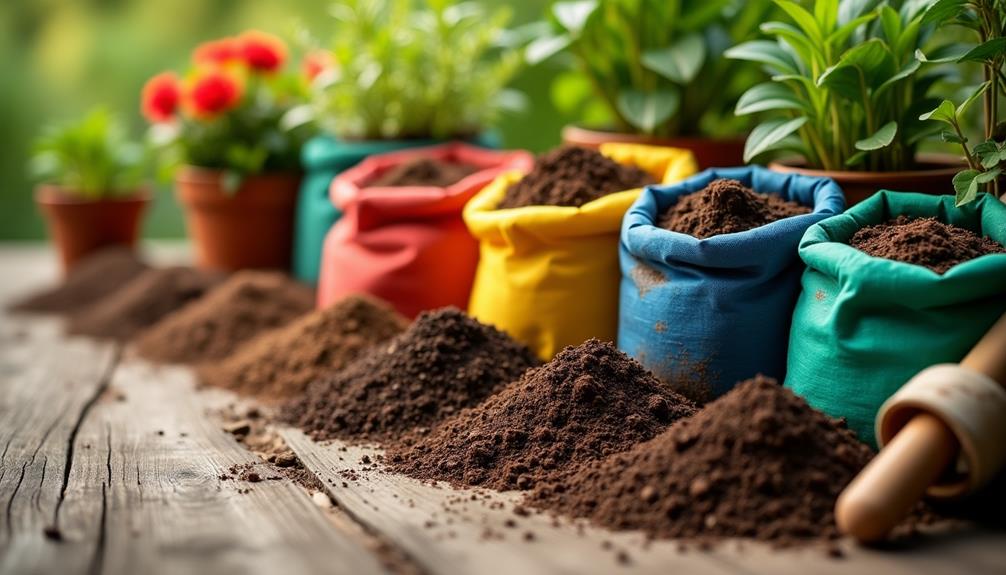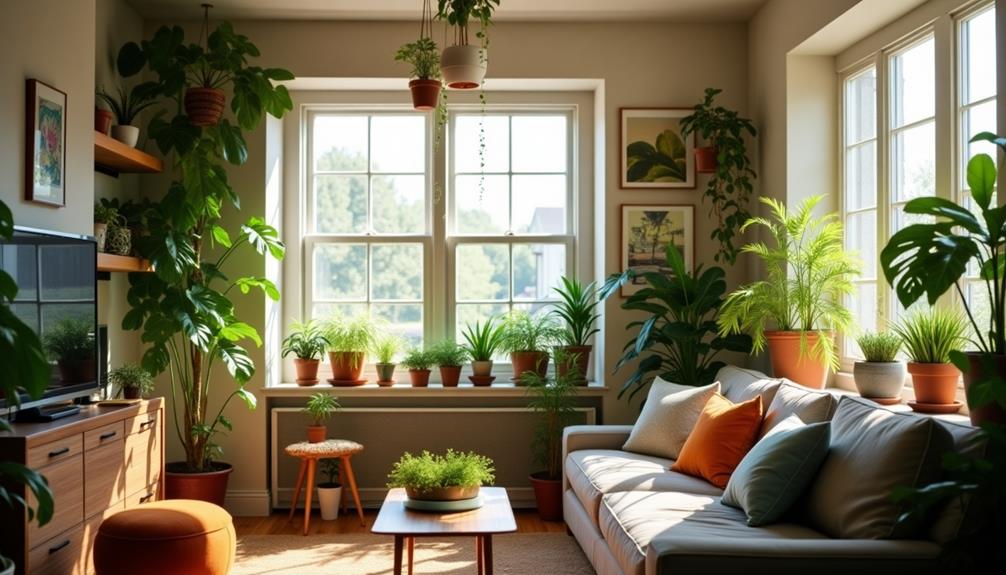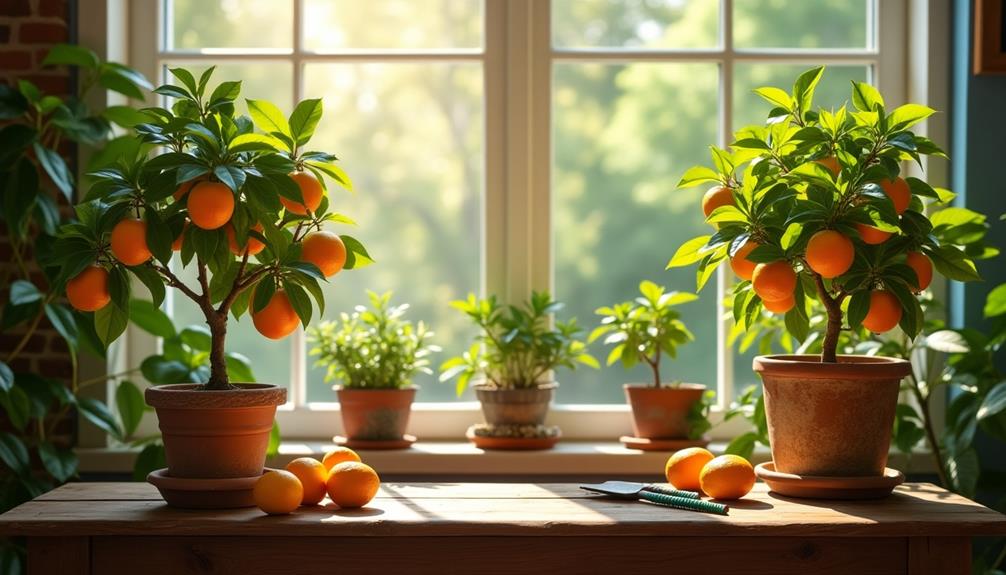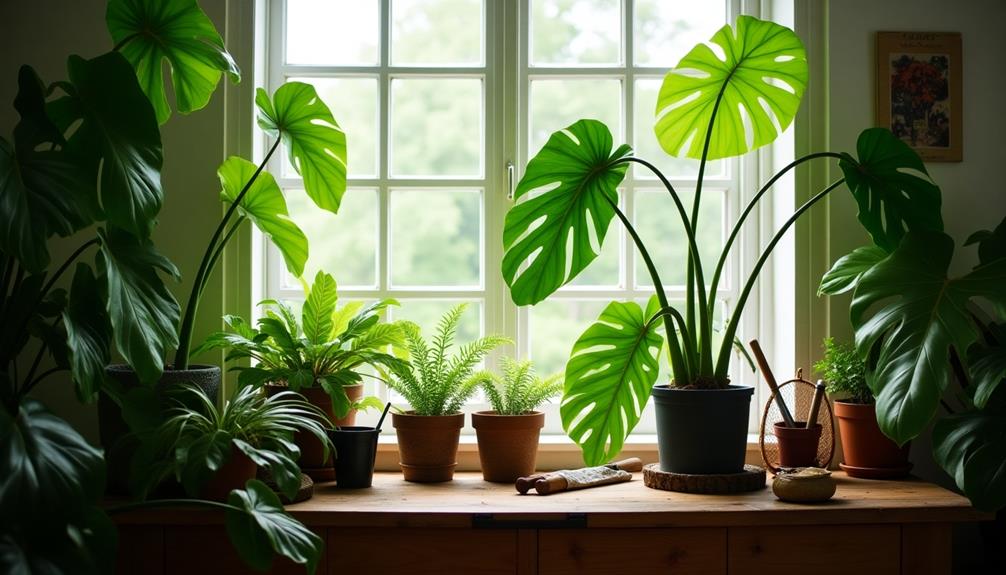When it comes to cleaning outdoor furniture, you can't just grab any solution and start scrubbing. You need to consider the material of your furniture—whether it's metal, wood, plastic, or wicker—since each requires a different approach. Start by gathering the right supplies and removing any loose dirt before moving on to the actual cleaning process. But what happens when you encounter stubborn stains or want to ensure your furniture lasts through the seasons? Understanding these nuances can make all the difference in maintaining your outdoor space.
Assessing Your Furniture Material
When you're ready to clean your outdoor furniture, the first step is assessing the material it's made from. Different materials require different cleaning approaches to maintain furniture durability and ensure long-lasting use.
For instance, if your furniture is made of metal, you'll want to check for rust or corrosion, which can significantly affect its lifespan. Wood furniture, on the other hand, often needs a gentler touch to prevent damage to its finish.
Next, consider the compatibility of your cleaning methods with the material. Plastic furniture is generally easy to clean, but avoid harsh chemicals that could cause fading.
For wicker or rattan, use a soft brush to avoid breaking any strands. If your furniture has cushions, check the fabric type to ensure you're using the right cleaning solution.
Essential Cleaning Supplies
Having the right cleaning supplies makes the process of maintaining your outdoor furniture much easier and more effective.
First, gather essential cleaning tools like a soft-bristle brush, microfiber cloths, and a sponge. These will help you tackle dirt and grime without scratching your furniture. For tougher stains, consider a gentle scrub brush or a pressure washer, but use these carefully to avoid damage.
You'll also need a suitable cleaning solution, whether it's a mild soap, vinegar, or a specialized outdoor furniture cleaner. Make sure it's safe for the material of your furniture—this keeps it looking great and prolongs its lifespan.
Don't forget about protective gear! Wearing gloves will protect your hands from harsh chemicals and dirt. If you're sensitive to allergens, consider a mask, especially when cleaning in dusty areas or working with mold and mildew.
Step-by-Step Cleaning Process
To effectively clean your outdoor furniture, start by removing any loose dirt and debris. Use a soft-bristle brush or a microfiber cloth to gently sweep away dust, leaves, and other particles.
Next, prepare a cleaning solution using mild soap and warm water. Avoid harsh chemicals that can damage the finish or fabric.
Once your solution is ready, dip a sponge or cloth into it and scrub the surfaces of your furniture. Pay special attention to any crevices where dirt might accumulate.
After scrubbing, rinse thoroughly with clean water to ensure no soap residue remains.
For wooden furniture, consider applying a wood conditioner or sealant after cleaning for added furniture protection. This step enhances longevity and keeps your furniture looking fresh.
Don't forget about cleaning frequency—aim to clean your outdoor furniture at least once a season, or more often if it's exposed to harsh weather conditions. Regular cleaning not only maintains its appearance but also extends its lifespan.
After cleaning, let everything air dry completely before use to prevent mildew. Following this step-by-step process helps keep your outdoor space inviting and well-maintained.
Stain Removal Techniques
When you notice common outdoor stains like mildew, food spills, or rust on your furniture, it's important to act quickly.
You'll want to use effective cleaning solutions to tackle these issues and restore your furniture's appearance.
Let's explore some tried-and-true techniques for getting those stains out.
Common Outdoor Stains
Outdoor furniture can easily fall victim to a variety of stains, each presenting its own unique challenge. Common culprits include food spills, bird droppings, rust, and mildew. The sun exposure effects can fade colors and weaken materials, making it crucial to address these stains promptly to maintain your furniture's longevity.
When it comes to food spills, act quickly. Blot the area with a clean cloth and use mild soap and water for cleaning.
Bird droppings should be removed immediately to prevent discoloration; use a soft brush to gently scrape off any residue.
For rust stains, a paste of baking soda and water can work wonders—apply it, let it sit, and then scrub gently.
Mildew and mold can be particularly troublesome, especially in humid climates. To prevent mold growth, ensure your furniture is dry after rain or dew.
If you spot any mold, use a solution of vinegar and water to clean it off, followed by thorough drying.
Effective Cleaning Solutions
How can you effectively tackle those stubborn stains on your outdoor furniture? Start by assessing the type of stain and the material of your furniture.
For mold or mildew, a mixture of equal parts water and white vinegar works wonders. Spray it on, let it sit for about 30 minutes, then scrub with a soft brush.
If you've got grease stains, a paste of baking soda and water can be effective. Apply it to the stain, let it sit for 15 minutes, and then wipe it away.
Cleaning frequency plays a crucial role in preventing stains. Regularly cleaning your furniture can minimize the buildup of grime and dirt, making it easier to tackle any stubborn spots that do appear.
Consider the weather impact as well; if you live in a humid area or one with heavy rainfall, you might need to increase your cleaning frequency.
Always test any cleaning solution on a small, inconspicuous area first to ensure it won't damage your furniture.
With these techniques, you'll keep your outdoor furniture looking fresh and inviting all season long!
Preventive Maintenance Tips
To keep your outdoor furniture looking great and lasting longer, regular preventive maintenance is essential. Start by cleaning your furniture frequently to remove dirt and debris that can cause wear over time. Use a soft brush or cloth and a mild soap solution to wipe down surfaces, ensuring you don't damage any finishes.
Next, consider applying protective coatings specific to the material of your furniture. For wooden pieces, a quality sealant can enhance furniture longevity and protect against moisture and UV damage. Metal furniture may benefit from a rust-resistant spray, while plastic can be treated with UV protectants to prevent fading.
Check for signs of wear or damage regularly. Tighten loose screws or bolts, and replace any broken parts promptly to avoid further issues.
Also, store cushions indoors when not in use to prevent mold and mildew.
Seasonal Storage Solutions
When the seasons change, proper storage of your outdoor furniture can make a significant difference in its longevity and appearance.
To ensure your furniture stays in top shape, start by cleaning each piece thoroughly to remove dirt and grime. Once it's clean, dry the furniture completely to prevent mold and mildew during storage.
Next, think about weather protection. If you can, store your furniture in a dry, indoor space like a garage or shed. If indoor storage isn't an option, invest in high-quality covers to shield your pieces from rain, snow, and UV rays. This will help maintain their finish and structure.
Space optimization is also crucial. Stack lightweight chairs, and disassemble tables if possible to save space. Use storage bins or shelves for smaller items like cushions or decorative pieces.
If you're short on space, consider multi-functional furniture that can be easily stored when not in use.
Eco-Friendly Cleaning Options
When it comes to cleaning outdoor furniture, you don't have to rely on harsh chemicals.
There are plenty of natural cleaning solutions and DIY recipes that can get the job done while being gentle on the environment.
Let's explore some effective options that you can easily make at home.
Natural Cleaning Solutions
For those looking to keep their outdoor furniture clean without harming the environment, natural cleaning solutions offer a smart and effective alternative. You can harness the power of simple ingredients found in your pantry to tackle dirt and grime while being eco-conscious.
One of the most popular options is vinegar. The vinegar benefits are numerous; it's an excellent disinfectant and deodorizer. Simply mix equal parts of vinegar and water in a spray bottle, and you've got a powerful cleaner that cuts through tough stains on your furniture.
Citrus power is another fantastic natural cleaning solution. The natural oils found in citrus fruits, like lemons and oranges, not only smell great but also contain antibacterial properties. You can use citrus juice mixed with water to clean surfaces and leave a refreshing scent behind.
These natural cleaning solutions not only effectively clean your outdoor furniture but also ensure you're doing your part for the planet. By opting for vinegar and citrus-based cleaners, you'll keep your furniture sparkling while minimizing your environmental impact.
DIY Eco-Friendly Recipes
Creating your own eco-friendly cleaning solutions can be both fun and rewarding. You can easily whip up homemade sprays using simple ingredients that you probably already have in your kitchen.
For a basic all-purpose cleaner, mix equal parts of white vinegar and water in a spray bottle. This solution cuts through grime and doesn't harm the environment.
If you're looking for something to tackle tougher stains, consider using biodegradable soaps. Combine one tablespoon of biodegradable soap with two cups of warm water for a gentle yet effective cleaning mix.
Use this on your outdoor furniture to remove dirt and mildew without causing damage to nature.
For a fresh scent, add a few drops of essential oils like lavender or lemon to your homemade sprays. Not only will it leave your outdoor space smelling great, but it'll also enhance your cleaning experience.

